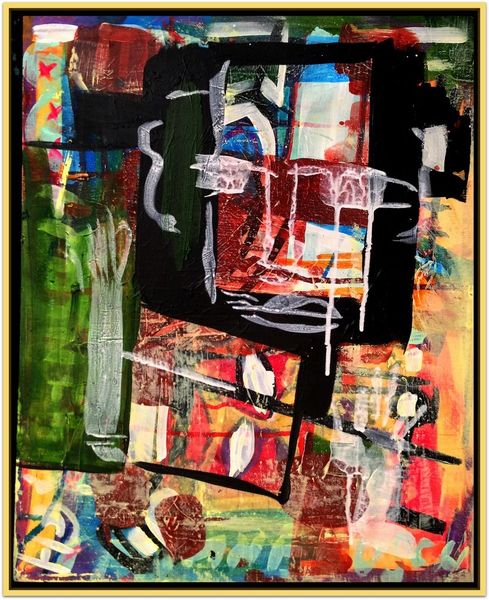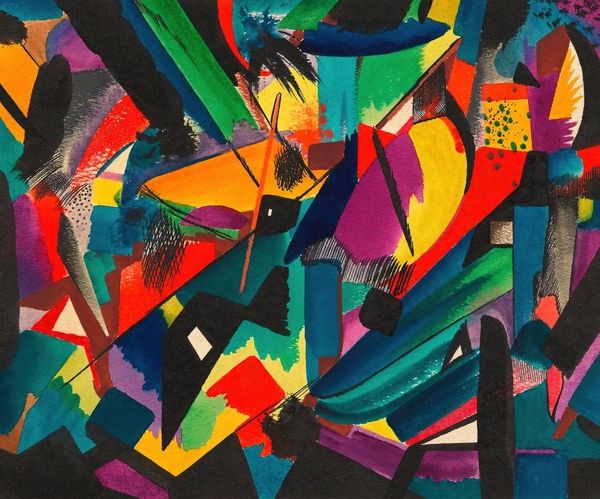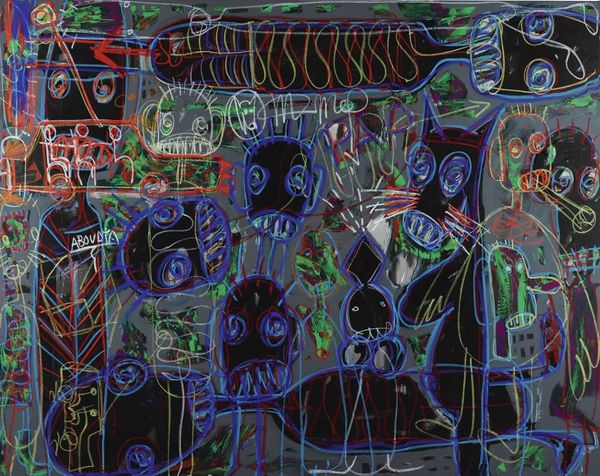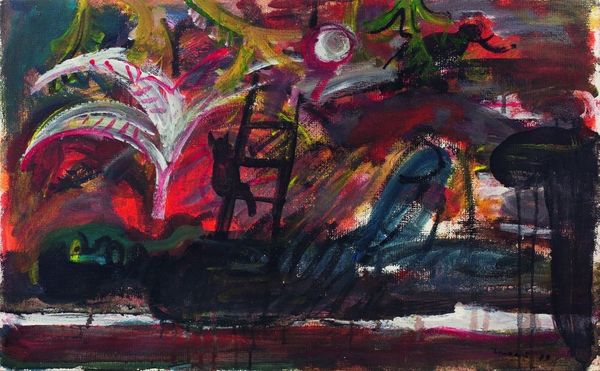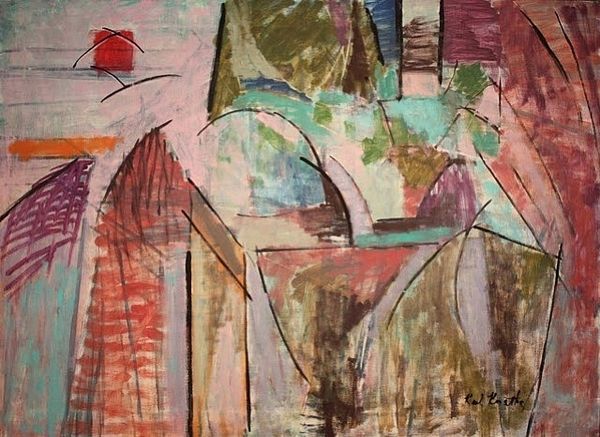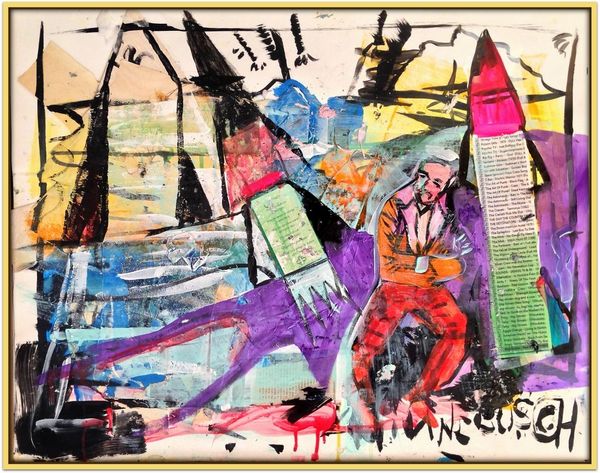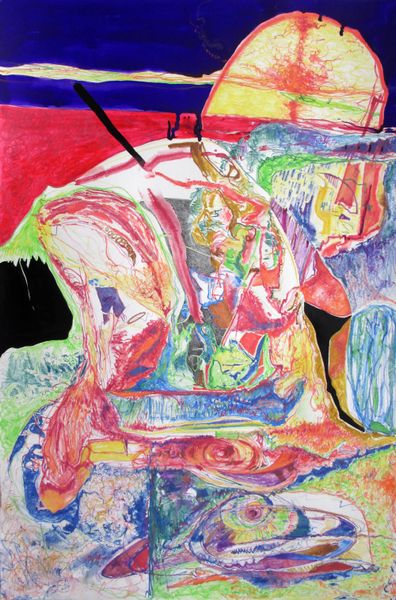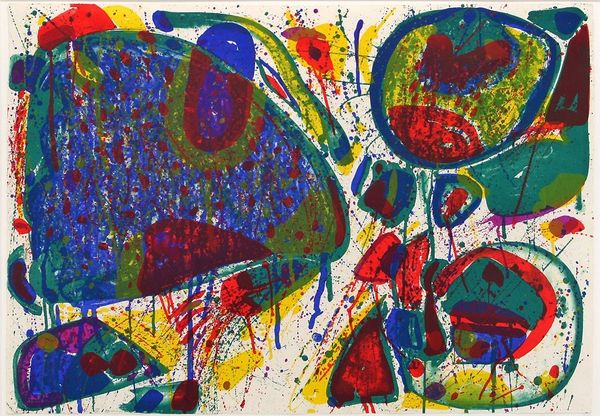
Copyright: Bruno Cassinari,Fair Use
Editor: So here we have Bruno Cassinari's "Finestra Verde" from 1977, an acrylic on canvas. The bold color and somewhat haphazard geometric forms create such a unique atmosphere! It almost feels like I'm looking through a fractured kaleidoscope. How do you interpret this work? Curator: Cassinari's work sits intriguingly within the context of post-war Italian art, doesn't it? Looking at this through a historical lens, Expressionism in Italy after the Second World War served a really vital social function. He painted this at a time when geometric abstraction dominated. Do you see how Cassinari both adheres to and departs from geometric visual languages of the era? Editor: Well, yeah. It has geometric components, but the application is very gestural. The "window" doesn't really contain anything recognizable. Is that tied to the post-war context? Curator: Absolutely. Abstraction, like here in Cassinari’s work, moved into a subjective language of interiority. This departure became symbolic of a move away from the formal constraints of earlier abstraction towards something that acknowledged lived human experience, even trauma. You see the violence of brushstroke? This painting becomes a site for Cassinari to negotiate individual and collective trauma. What do you make of that framing now? Editor: That gives me a totally new way to appreciate what he’s doing here. The vibrant colours are maybe not just aesthetically driven. They could be communicating an inner turmoil! Thanks for offering this insight! Curator: Exactly! It encourages a broader conversation about the socio-political function of art after periods of upheaval and re-evaluation, wouldn't you say?
Comments
No comments
Be the first to comment and join the conversation on the ultimate creative platform.

